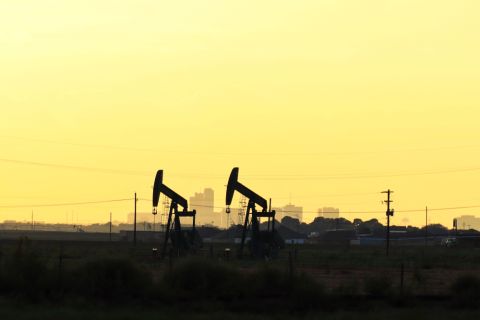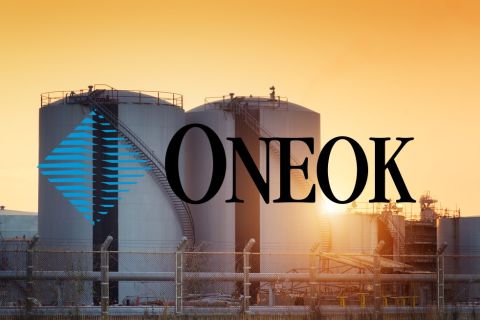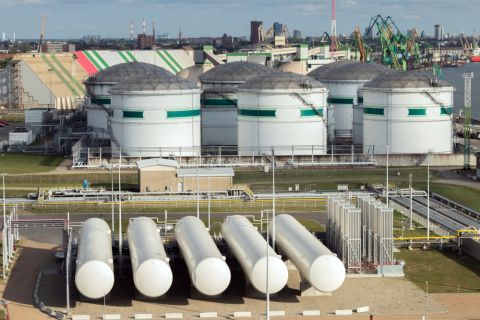
Data quality, availability, consistency and management are necessary for data analytics to be useful. (Source: Shutterstock)
DENVER—As data floods in from a variety of sources, companies are increasingly embedding data analytics into oil industry workflows.
Data can be used for a plethora of industry operations, including geosteering, but before it can be used, the quality of the data must be confirmed, speakers said during the “Integrating Data Analytics with Petroleum Engineering Workflows: What is Needed?” lunch on June 13 at Unconventional Resources Technology Conference (URTeC). Likewise, artificial intelligence (AI) is also playing a larger role in how things are done. Chevron Corp.’s five-year vision is for workflows to be AI-assisted.
Typically the first thing a drilling engineer wants to do with data analytics is prediction, Alireza Haghighat, director of upstream engineering specialists at S&P Global, said.
“They want to decrease the cycle time. They want to decrease nonproductive time and improve the efficiency,” he said.
Down the line, every part of the team has their wish list from data analytics. Whether those needs can be delivered with accuracy is the question.
Completion engineers, for example, want to know where stages start and end, with the ability to predict wellhead pressure and screen outs, he said. Reservoir engineers are interested in decline curve analysis.
“The most widely used application of data analysis for reservoir engineers is asset development optimization, specifically for unconventional resources,” he said.
Production engineers want predictions about liquid loading and when equipment needs to be maintained, he added.
But challenges remain in applying data analytics in the oil industry, Haghighat said.
“Data is the most important building block. So data quality, data availability, data consistency and data management is an issue,” he said.
That means there needs to be infrastructure in place for dealing with the data, he said.
Travis Clark, a wells data science strategist at Chevron, said the company is working to create the foundation for a real-time fracture adviser.
“We’re in the beginning stage of that,” he said.
Having a successful data project starts with properly framing the business problem and understanding what success looks like, he said. Buy-in for the program is also critical.
“We create this model that's going to predict something, but we can't drive adoption because nobody believes that it's reliable. Obviously that's a struggle,” he said. “To get that credibility, there's kind of a path that you can go down.”
That path involves experts understanding what is driving the model, as well as being honest about the model’s strengths and weaknesses, Clark said.
“The data is extremely critical,” he said.
Data quality, again, is the most important piece. And there needs to be enough.
Yuxing Ben, an analytics engineer for Occidental Petroleum, said quality is even more critical with smaller data sets.
“I've seen some research type work on using transfer learning to solve the small data issues,” she said, calling the work “very interesting."
Sometimes, Haghighat said, the industry will bring data to the data scientist and ask them to solve a problem, and sometimes the industry has to educate domain experts—such as drilling engineers—on data science. The question, he said, is which approach makes the best sense.
“It's a little of both,” Clark said.
He sees value in building the data science skills of domain experts because they understand business problems.
“They can kind of see the project from start to finish, right? They have the skills to go through, really do a POC [proof of concept] and improve whatever you're trying to do,” he said.
Model building, he said, is both an art and an iterative process “where you try something and see what happens and you go back to the beginning and start over,” so domain knowledge can be critical. On the other hand, data scientists coming from a non-energy background will offer an unbiased view and come at the problem with a fresh set of eyes.
“Data science, machine learning, it's a rapidly changing field. So having somebody who's probably just studied and is kept up to date on new techniques” could be really helpful, Clark said. “I think it comes down to combining both.”
As for the future of workflows, Clark said Chevron’s five-year vision is to have them “be kind of AI-assisted, whatever that looks like.”
Getting there requires deeply understanding how data is being used within workflows.
“How are we using data science and AI within the workflows to plan wells better?” he said. “How are we doing, using the real-time models when we're actually drilling to make better decisions?”
Recommended Reading
ONEOK CEO: ‘Huge Competitive Advantage’ to Upping Permian NGL Capacity
2024-03-27 - ONEOK is getting deeper into refined products and adding new crude pipelines through an $18.8 billion acquisition of Magellan Midstream. But the Tulsa company aims to capitalize on NGL output growth with expansion projects in the Permian and Rockies.
Dallas Fed Energy Survey: Permian Basin Breakeven Costs Moving Up
2024-03-28 - Breakeven costs in America’s hottest oil play continue to rise, but crude producers are still making money, according to the first-quarter Dallas Fed Energy Survey. The situation is more dire for natural gas producers.
The Answer to Curbing Permian Associated Gas? More M&A
2024-04-03 - Consolidation will result in less oil production, and therefore less associated gas, as fewer wells are produced, an energy analyst says.
As ONEOK Digests Magellan, Sets Stage for More NGL Growth in 2024
2024-02-28 - ONEOK is continuing the integration of its newly acquired Magellan assets in 2024 as the company keeps an eye out for M&A opportunities and awaits regulatory approvals for certain projects.
‘Unexpected’ JV to Move Permian NatGas to Gulf Coast LNG Terminals
2024-03-26 - A trio of midstream companies—Enbridge, Whitewater and MPLX—will work together to build infrastructure to transport Permian Basin natural gas to Gulf Coast LNG terminals.






